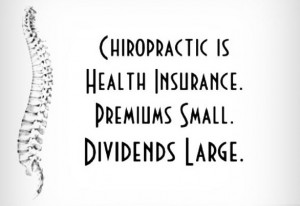 Contrary to popular belief, “health” insurance policies won’t necessarily protect you for the burden of huge medical bills. Many people are surprised to learn that’s just not the case. A Harvard University study looked at almost 2,000 Americans that were in bankruptcy court. Half of these people said that illness or medical bills drove them to bankruptcy. In fact, every 30 seconds in the United States, someone files for bankruptcy due to a serious health problem. What’s even more surprising is that more than 75 percent of those filing for bankruptcy had “health” insurance, losing their coverage during the course of their illness. They are then faced with the double misfortune of illness and bankruptcy.
Contrary to popular belief, “health” insurance policies won’t necessarily protect you for the burden of huge medical bills. Many people are surprised to learn that’s just not the case. A Harvard University study looked at almost 2,000 Americans that were in bankruptcy court. Half of these people said that illness or medical bills drove them to bankruptcy. In fact, every 30 seconds in the United States, someone files for bankruptcy due to a serious health problem. What’s even more surprising is that more than 75 percent of those filing for bankruptcy had “health” insurance, losing their coverage during the course of their illness. They are then faced with the double misfortune of illness and bankruptcy.
Dr. David Himmelstein, the lead author of the Harvard study, had a good quote that summed up this situation. He cautioned, “If you’re sick enough, long enough, you’re likely to be financially ruined.”
Bankruptcy used to be more associated with bad business deals, out of control spending or just plain bad luck. Unfortunately, however, bankruptcy is increasingly accompanying serious health problems. In fact, people who go under from medical debt are mostly middle-class or working-class people who own their own homes.
So, what do you do? Well the obvious answer is just don’t get sick. But how in the world do you do that?
You have to remember, health is our normal, natural state. However, most people neglect their health, only paying attention to it when they have symptoms that become unmanageable. But by this time problems can become severe, and sometimes irreversible. This is why it is so important to follow up with preventative and wellness visits and not just come in when you are in pain. This can help keep you healthy as well as save you money in the long run.
This is not simply just the opinion of a chiropractor. I’ve discussed before how chiropractic saves you money in the long term. A 7 year study conducted by an independent physician association found that patients’ regular utilization of chiropractic care reduced the need for: hospitalization by 60%, hospital days by 59%, pharmaceutical usage by 85%, outpatient surgeries & procedures by 62%, and overall global health care costs by 50%.
Your health insurance provider might not understand making an office visit when you’re feeling great. And it may even sound a little strange to you too. But preventive measures, especially chiropractic care, may actually provide more “insurance” than your insurance.





